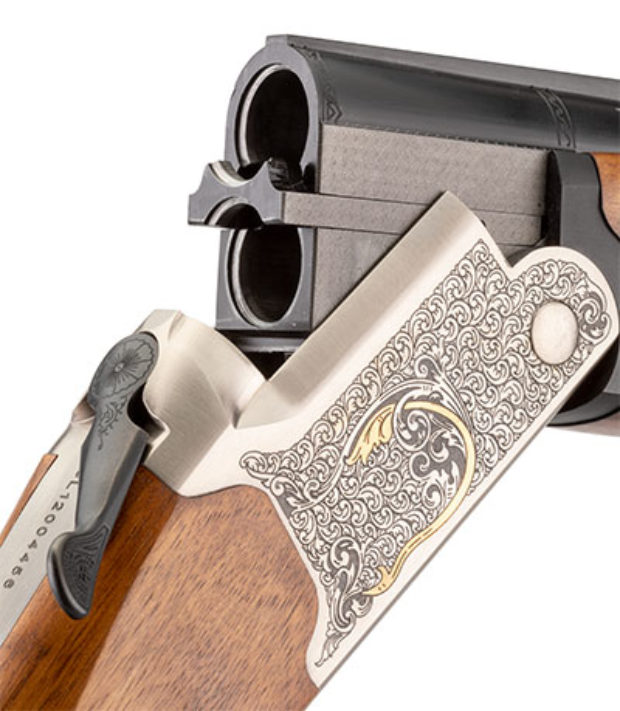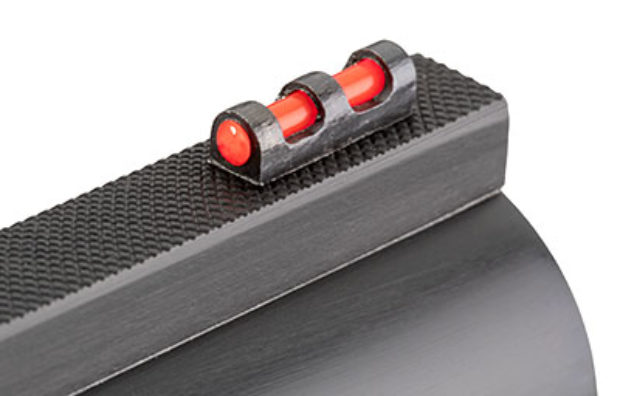Beautifully crafted over-under shotguns have been a longtime favorite for sporting clays, upland game and waterfowl hunting. These shotguns are simple, durable and reliable, with styling that pleases the eye and feels good in the hand, and the break-action design can reduce their overall length by as much as 3″ when compared to pump-actions or semi-automatics of the same barrel length. Unfettered by the added weight of the moving parts required for manually or self-cycled actions, over-unders balance nicely with a livelier swing and a slimmer fore-end that lends itself to more instinctive pointing. But as attractive and handy as over-unders can be, they often cost significantly more than other designs. The use of fine hardwoods, the application of embellishments and engravings to the receiver and controls, along with the challenges associated with building double-barrel assemblies, result in models that can cost thousands of dollars.

Based in Kansas City, Mo., TriStar Arms is an importer that offers a more affordable alternative with its Trinity series of over-unders manufactured in Turkey. Launched early in 2020, the Trinity came on the heels of the company’s award-winning Viper G2 Bronze semi-automatic shotgun chambered in .410 bore. The Trinity lineup includes two choices: The standard models feature all-steel receivers CNC-machined to tight tolerances for solid lockup and a lifetime of performance, while the aluminum Trinity LT models offer reduced weights. Customers can choose from a variety of chamberings and barrel lengths, but this evaluation takes a closer look at the steel-receiver 12-ga. model fitted with 26″ barrels.
The Trinity draws on classic, single-trigger, over-under-shotgun design with clean, smooth lines and comfortable handling. It’s outfitted with hard wood and blued steel for traditionalists looking to take a break from tactical and polymer-stocked long guns—the only polymer to be found on this model is in the buttcap that supports the recoil pad. The receiver features self-adjusting locking lugs and a sealed action to keep out dust and debris, and is finished in a matte silver. The top of the receiver is beveled and rounded to form a clean fit with the barrel assembly. The remaining three sides of the receiver have been acid-etched with handsome, conservative floral patterns. This engraving is enhanced with black enamel and 24-carat gold accents. Similarly engraved embellishments can be found along the top chamber and the top lever.

The primary safety selector is located on the top tang. When pressed back into the “Safe” position, the trigger, hammer lever and hammer are blocked in order to immobilize the firing mechanism. It should be noted that the safety does not automatically engage when the action is opened. The safety slider also serves as the barrel selector. When the safety is engaged, the slider can be positioned to the left to fire the top barrel first or to the right to fire the bottom barrel first. The smooth-faced steel trigger is housed within a traditional rounded trigger guard. This particular gun exhibited a smooth trigger pull that broke cleanly at 6 lbs., 10 ozs. of pressure according to a Lyman’s digital trigger gauge.
The 26″-long steel barrels feature monobloc construction with a blued finish, a vented top rib and vented mid rib. The 3″ chambers will also accept 2¾” shells and the growing selection of soft-shooting “shorty” 1¾” 12-ga. shells for those looking to reduce felt recoil. When the action is opened, an extractor lifts spent shell cases up and out of the chambers just enough to be manually extracted.
Both bores and chambers are chrome-lined to reduce wear and increase corrosion resistance. The top rib is finely checkered to reduce glare, with a red, fiber-optic pipe located at the muzzle. The barrels are threaded to accept interchangeable Beretta/Benelli Mobil-style choke tubes. The shotgun arrives with a set of five flush-fit choke tubes (skeet, improved cylinder, modified, improved modified, full), a wrench and a storage case.
The slim-profile stocks are shaped from Turkish walnut treated with an oil finish. The fore-end has effective laser checkering on either side with a blued steel release lever. The shoulder stock is also checkered along both sides of the grip for added purchase. The vented, black rubber recoil pad is soft and effective in reducing felt recoil. At the top of the pad is a smooth, rounded extension from the hard polymer buttcap. This extension allows the stock to slide easily up across a shooter’s clothing when shouldering the gun; this is a nice touch that makes the Trinity even more comfortable to work with.

At the shooting range, the Trinity clearly demonstrated that it’s meant to be put to work in the field, not just hung on a wall for display. The factory-fresh action was tight to begin with, but smoothed out to a just-right level of resistance during the course of our testing. The shotgun handled nicely and operated flawlessly without any mechanical or ammunition-related issues. Pattern testing was conducted at 40 yds. using Fiocchi USA high-velocity Upland Game loads launching 1.25 ozs. of No. 7½ lead pellets at 1330 f.p.s. This game load packs quite a punch, but the recoil pad helped to soak-up the felt recoil pretty effectively.
The TriStar Trinity shotgun neatly blends an elevated appearance with popular, time-tested features at a fair price. Overall, the fit and finish of the Trinity demonstrates high-quality craftsmanship and attention to detail, and the embellishments on this gun are a step up from the laser engraving used on some of the company’s previous models. It looks and handles like a gun that costs thousands of dollars, which is quite an accomplishment given that the 12-ga. model tested has a suggested retail price of only $730.



